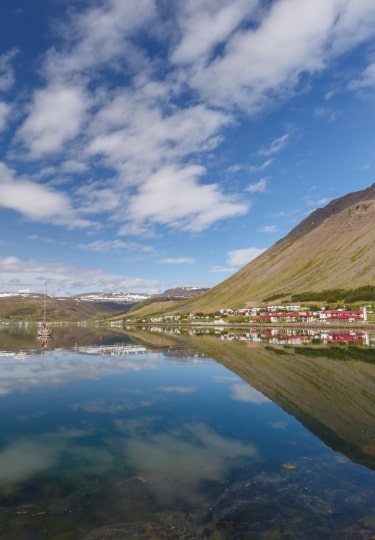Isafjordur, which translates as fjord of ices, is a beautiful town in Iceland’s faraway Westfjords, just south of the Arctic Circle.
Things to do in Isafjordur range from culinary to cultural, though its biggest draw is nature and wildlife. With puffins, Arctic foxes, seals, and whales to spot, the Westfjords is a paradise for nature lovers.
Isafjordur may be wild and remote, high up in the North Atlantic Ocean, but it has developed over several centuries as a booming trading post and fishing port. From whale watching to waterfalls, read on to discover the 14 best things to do in Isafjordur.
Go Whale Watching
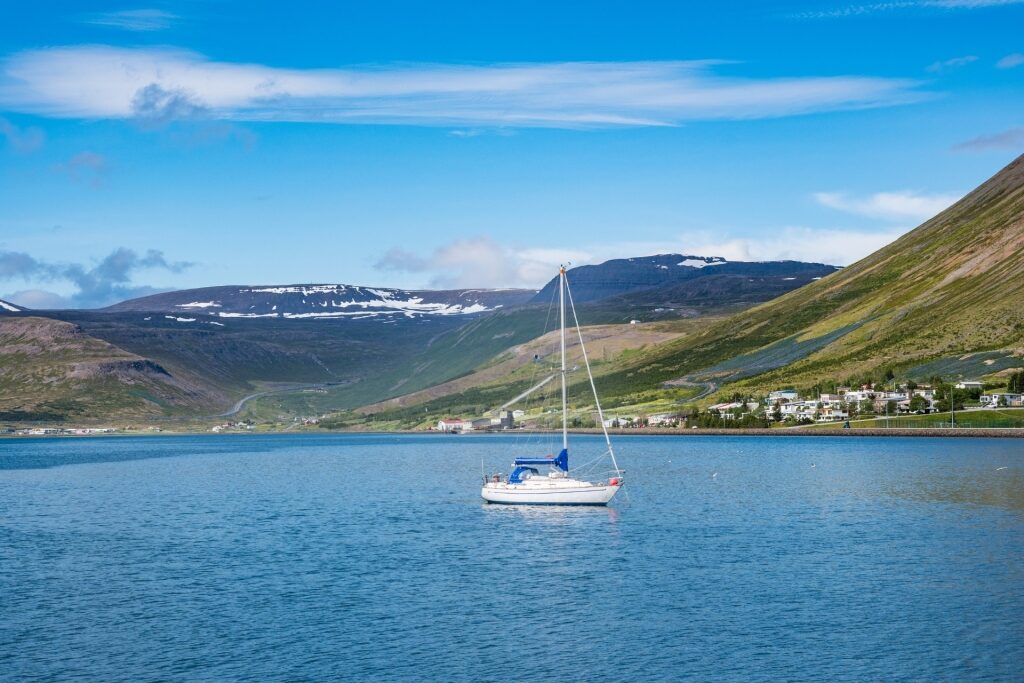
Whale watching in Isafjordur
One of the best things to do in Isafjordur is to go in search of majestic whales in Ísafjarðardjúp Bay.
Soak up the scenery on a thrilling RIB boat ride as you look for fins rising from the deep blue and tails slapping the surface.
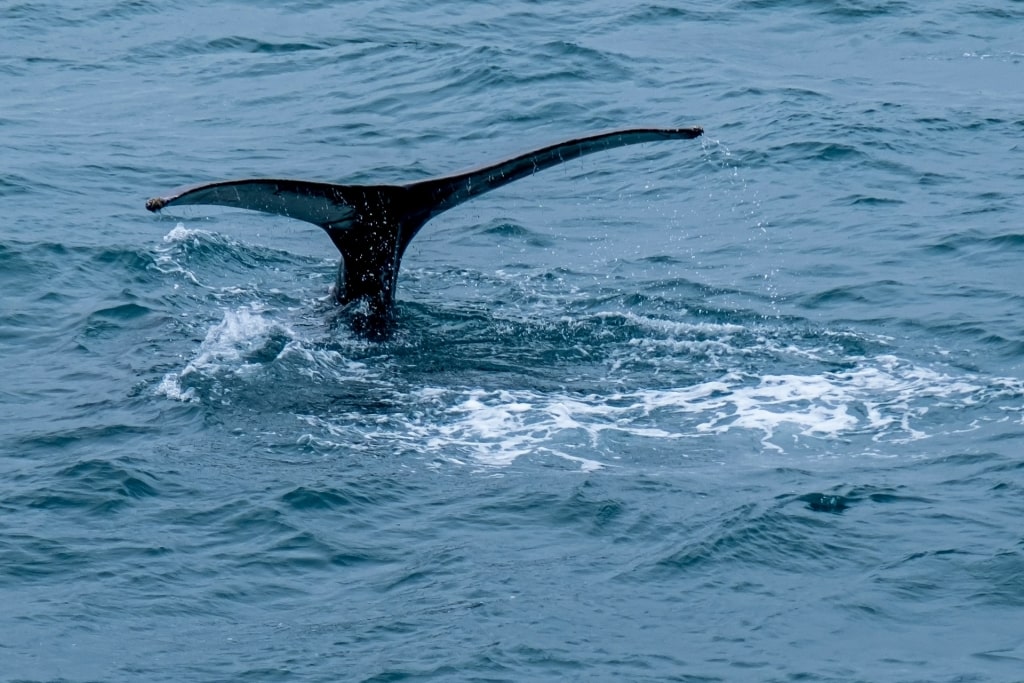
Humpback whale
Around 20 types of whales are found here, including minke, sperm, humpback, beaked whales, and orcas. Less common are blue and fin whales. Though rare, they are sometimes spotted so you’ll need to keep a constant watch of the water.
Wrap up in warm layers and waterproofs, even in summer, Iceland can be blustery and cold.
Read: Best Places to Go Whale Watching in the World
Learn About Isafjordur’s History at Culture House
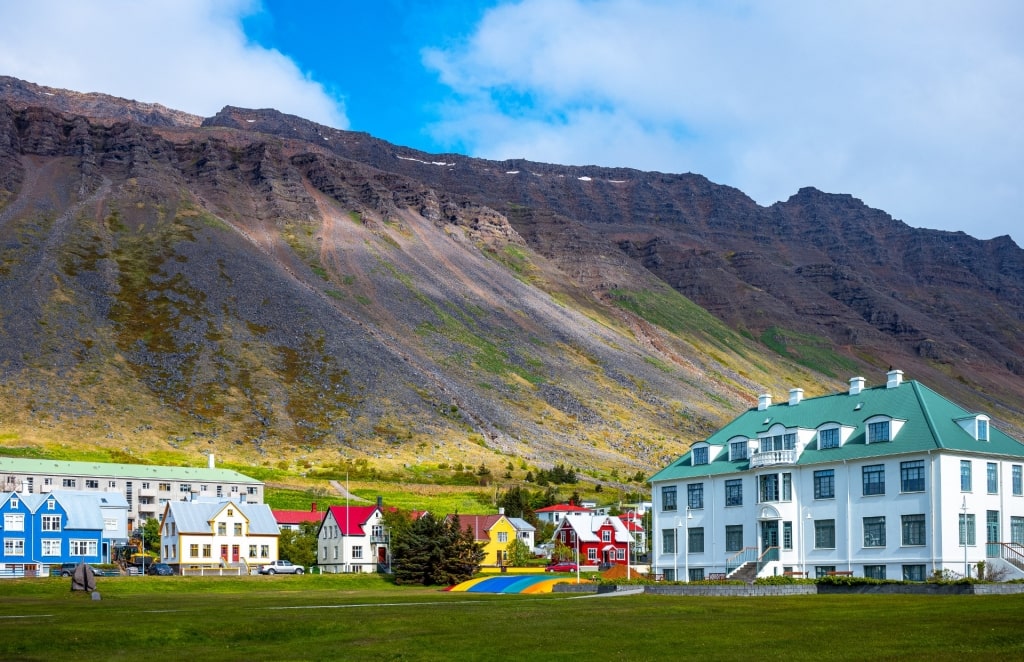
Culture House
If you’re looking for historic insight into Isafjordur, visit the town’s gleaming-white Culture House.
This grand, four-story building has an interesting backstory. It’s set in Isafjordur’s former hospital. Built in 1925, it only survived as a hospital until 1929.
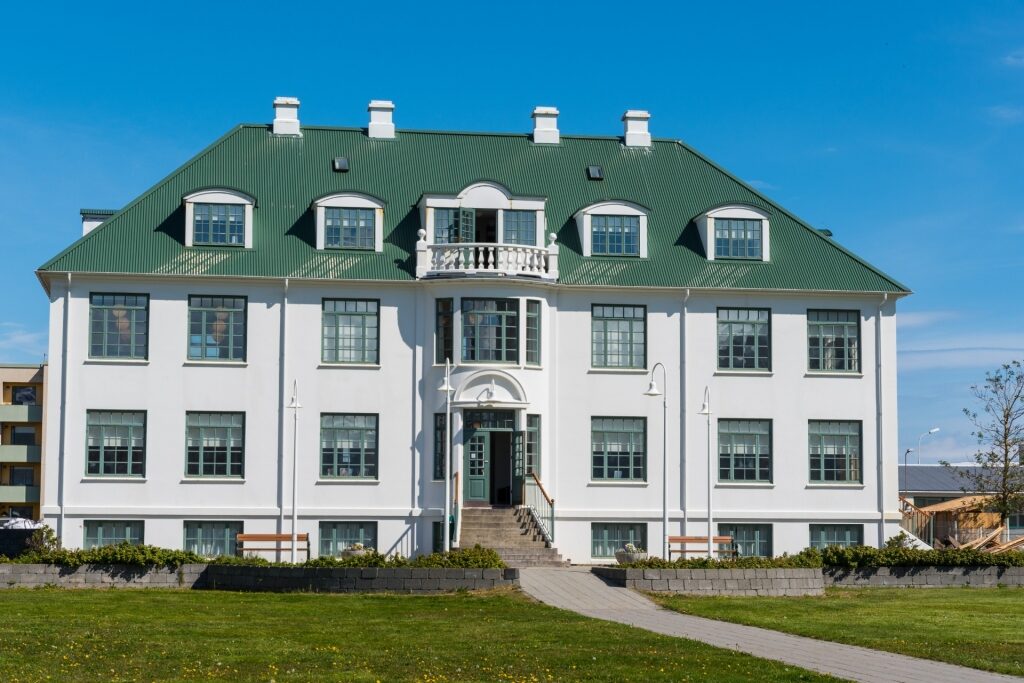
Culture House
Culture House is now home to a thought-provoking library, the Isafjordur Archives, the Isafjordur Photography Museum, and the Isafjordur Art Museum.
View the exhibitions at the Art Museum, which profiles prominent Icelandic artists, such as Soffía Sæmundsdóttir. Culture House also displays curiosities from the building’s brief period as a hospital, such as outfits worn by medics and medical paraphernalia.
Marvel at Birdlife on Vigur Island
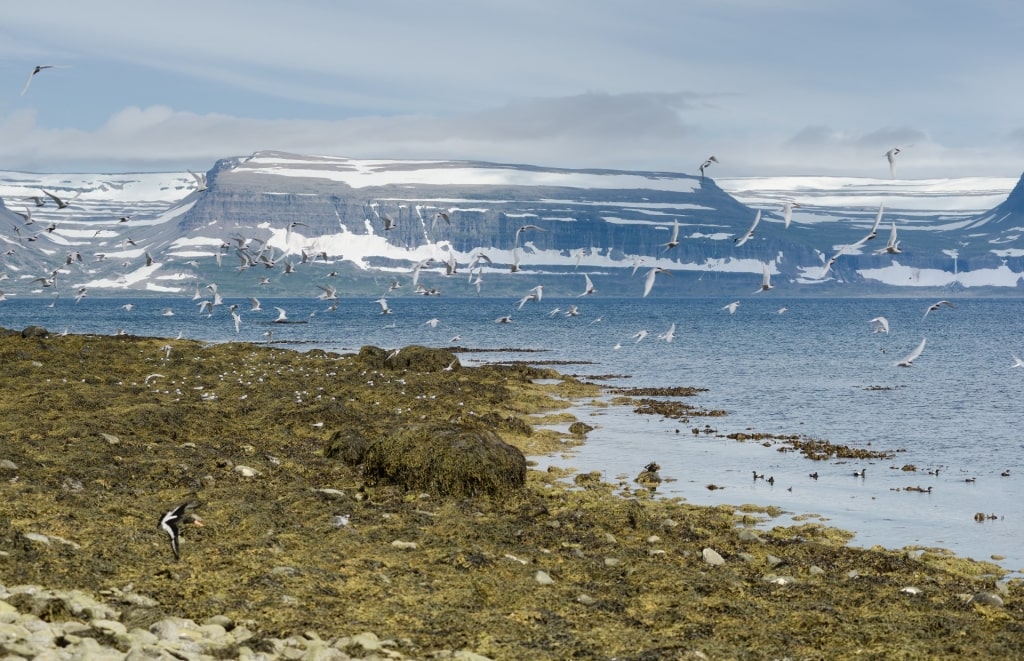
Vigur Island
Jaw-dropping Vigur Island, one of the most beautiful places in Iceland, is often referred to as Puffin Island due to its influx of orange-beaked birds during spring and summer.
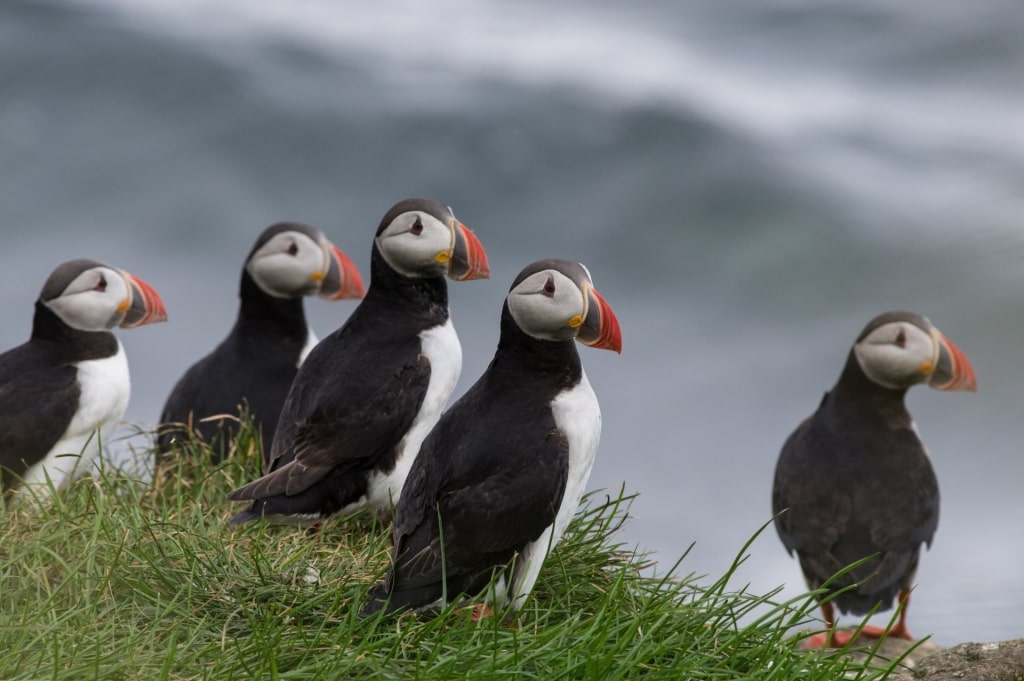
Puffins
Vigur is the second-largest island in the dramatic Ísafjarðardjúp. Carpeted in green during Iceland’s warmest months, it is teeming with bird life, including 7,000 eider ducks, 100,000 puffins, a rare colony of black guillemots, razorbills, and Arctic terns.
You can reach Vigur Island via a 30-minute boat ride from Isafjordur harbor, with a regular service between May to September.
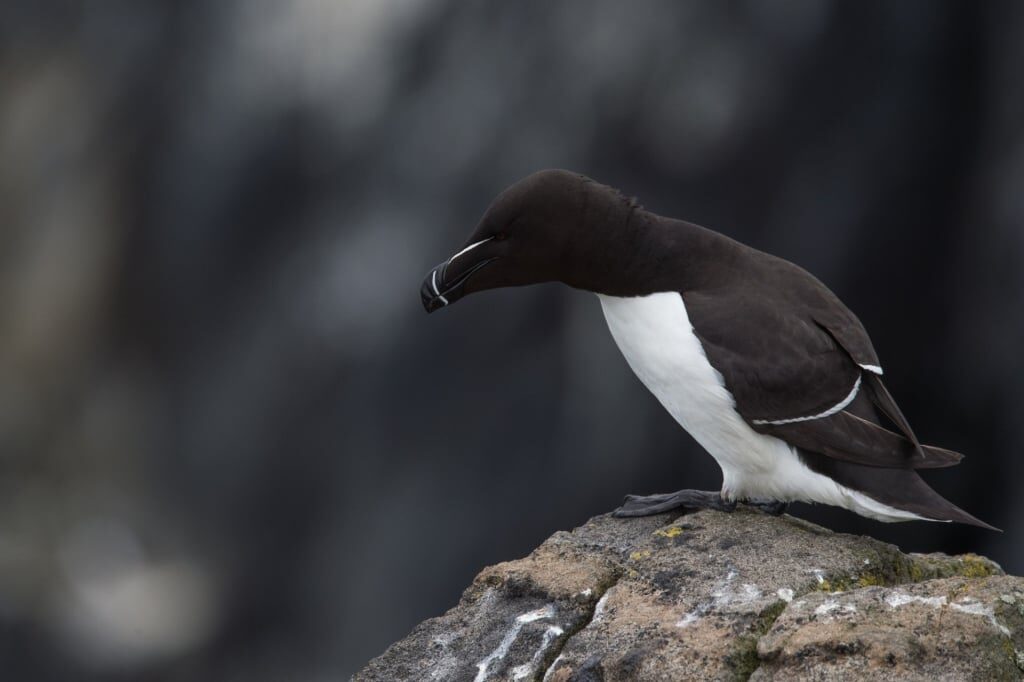
Razorbill
Enjoy a guided walk around the Vigur, listening out for the high-pitched calls of arctic terns and buzzy razorbills. A guide will lead you at a safe distance from the bird life to see them in their natural habitat. Iceland’s only windmill is also found on the island.
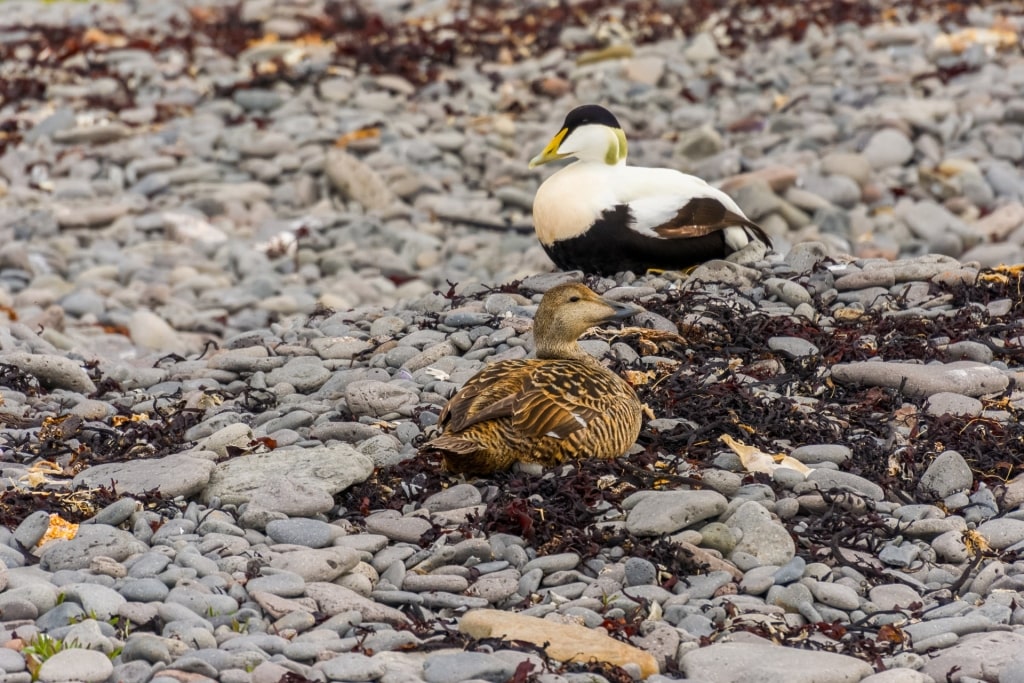
Eider ducks
Marvel at Vigur Island’s well-insulated eider ducks. Iceland is the world’s largest provider of precious eiderdown with the annual harvest taking place on the island every summer, during which no birds are harmed; the down is collected from abandoned nests.
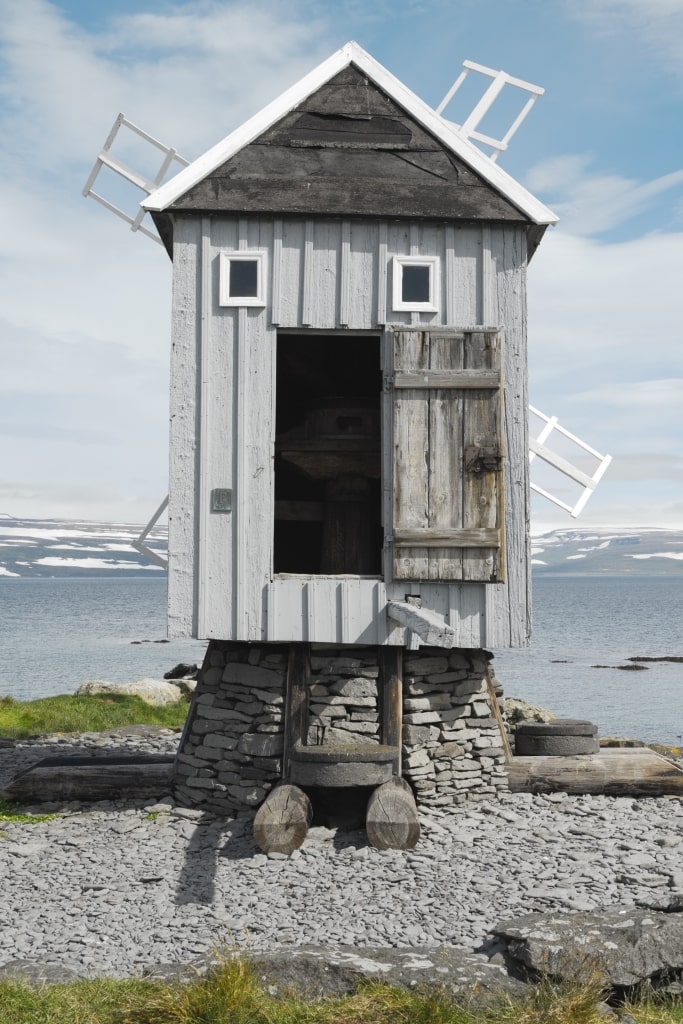
Post Office, Vigur Island
You could also visit Vigur’s tiny Post Office or check out the heritage exhibition charting the island’s history.
Finish your island tour with warming coffee and cake. Hjónabandssæla—a jammy, oatmeal cake—is the local delicacy.
Spend Time at Isafjordur’s Curious Museums
Iceland is home to many weird and wonderful museums. Two of them—the Museum of Everyday Life and the Nonsense Museum—are found in Isafjordur, just a two-minute walk apart.
Opened in 2016 by Björg and Vaida, the charming Museum of Everyday Life is all about exploring the mundanity of everyday life. With a focus on the Westfjords, installations and stories are told by local voices on topics such as family, work, and the humdrum of daily life.
Just steps away, the cheery Nonsense Museum celebrates the joy of collecting, with a focus on more unusual items such as police caps. Collections of teaspoons, wartime tobacco packets, sugar cubes, and matchboxes are also on display.
Learn About Local Wildlife at the Arctic Fox Centre
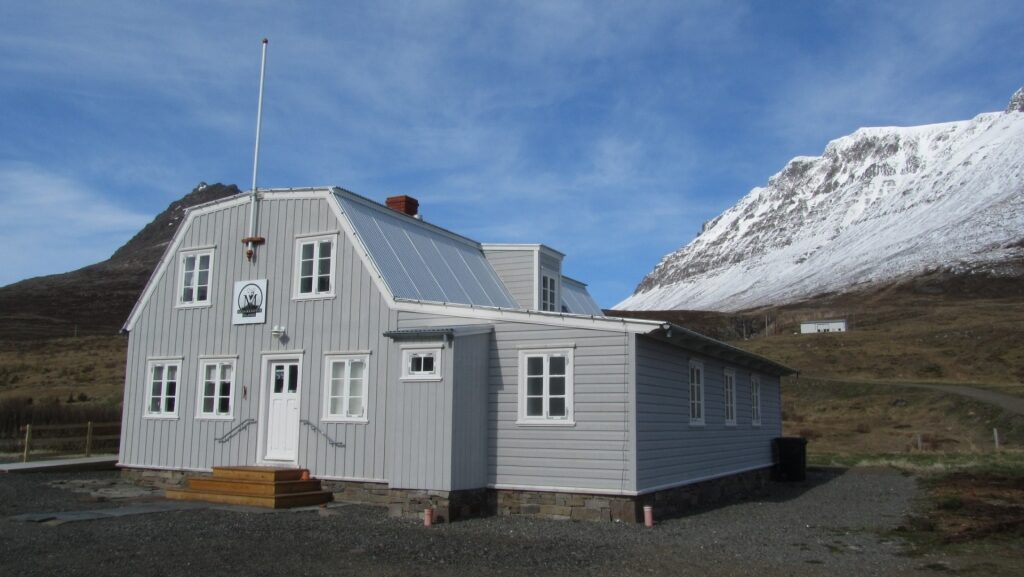
Arctic Fox Centre Photo by MoZie on Wikimedia Commons, licensed under CC BY-SA 3.0
The adorable-looking Arctic fox, with its thick coat of white or chocolate-colored fur, is commonly found in the tundra-landscape of north Iceland.
To learn about this fluffy species, head to the Arctic Fox Centre in Súðavík, a scenic 20-minute drive from the center of Isafjordur. The center is based within Eyrardalsbæ house. Constructed in 1896, it’s the oldest building in Súðavík.
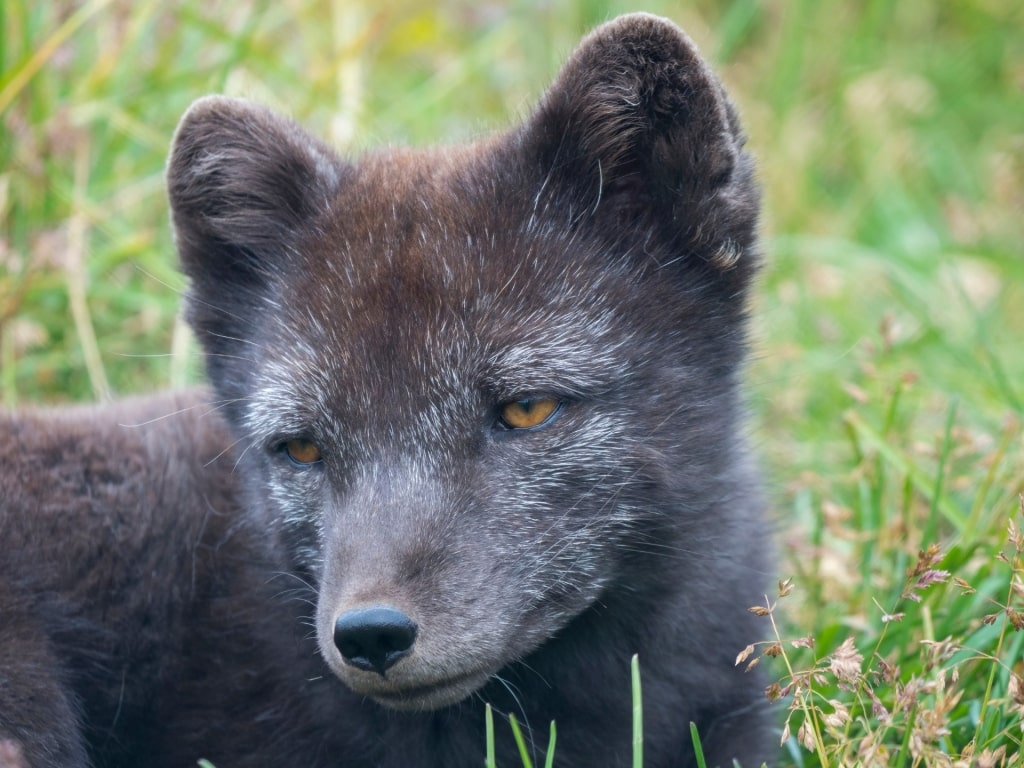
Arctic fox
Discover the biology and history of the Arctic fox and man’s impact on the species in Iceland. Frank topics are covered, too, including fox hunting and farming in the region, with beautiful wildlife photography on display.
The Arctic Fox Centre typically opens from May 1 to September 30. After visiting the Arctic Fox Centre, stop by Súðavík’s Sætt & Salt. This gorgeous chocolatier sells handmade chocolates and offers chocolate-making sessions.
Sip Local Ales at Dokkan Brugghús Brewery

Craft beer
The first and only brewery in Isafjordur, Dokkan Brugghús is a delightful family-run business that was founded in 2017 out of a need for local ales.
Named after the area around the marina where the Icelandic brewery is based, Dokkan uses natural spring water that trickles down from Westfjords’ soaring mountains. The water is naturally filtered and purified through layers of lava.
Visit the microbrewery to sample some of the seven thirst-quenching Dokkan brews, including golden IPAs and rich stouts. A pub menu served with dishes such as fish and chips served Tuesday to Saturday.
Read: Incredible Hot Springs in Iceland
Explore the Magnificent Bunárfoss

Bunárfoss
Búnarfoss waterfall lies just a couple of miles outside of Isafjordur, near a winter ski resort, campsite, and golf course.
The best way to get to Búnarfoss is on foot. Take a right immediately after from Tunguskogur Campground and follow the cascading stream around 393 feet to the horsetail-shaped falls.

Bunárfoss
Take the path that runs alongside Búnarfoss for some spectacular views of the remote Tungudalur valley.
Búnarfoss lies near the 5.6-mile Westfjords Tunnel—Vestfjarðagöng, the longest underpass in Iceland—with the northern entrance (there are three arms of the tunnel) leading to Isafjordur.
Opened in 1996, the Westfjords Tunnel is a remarkable feat of engineering, avoiding the Breiðadalsheiði mountain road. With a summit of 2,000 feet, Breiðadalsheiði was regularly blocked by snow and avalanche.
Hike to the Troll Seat
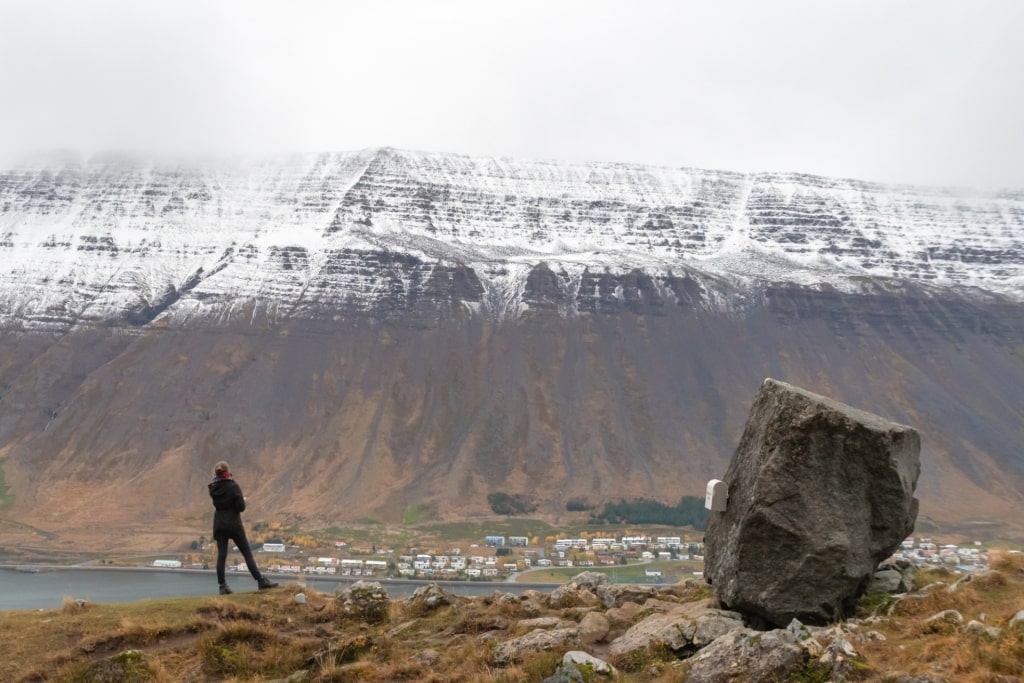
Troll Seat
The Troll Seat, also known by its official name of Naustahvilft, takes its nickname because of its form: A gigantic bowl-shape dip in the mountain that looks like a seat carved into the landscape.
Choose the flat and easy hike to get to the Troll Seat from Isafjordur. The route is three and a half miles, forming a U-shaped around the bay. Hikers pass Isafjordur’s small airport with its single, fjord-side runway lying directly beside the road.
The landscape here is extraordinary, with undulating green mountains surrounding one of the best fjords in Iceland. You could climb right up into the Troll Seat for more satisfying views.
Wear warm clothes and comfy footwear. Pack water and snacks, too, as there’s no cafe or convenience stores on the route.
Kayak in Calm Waters
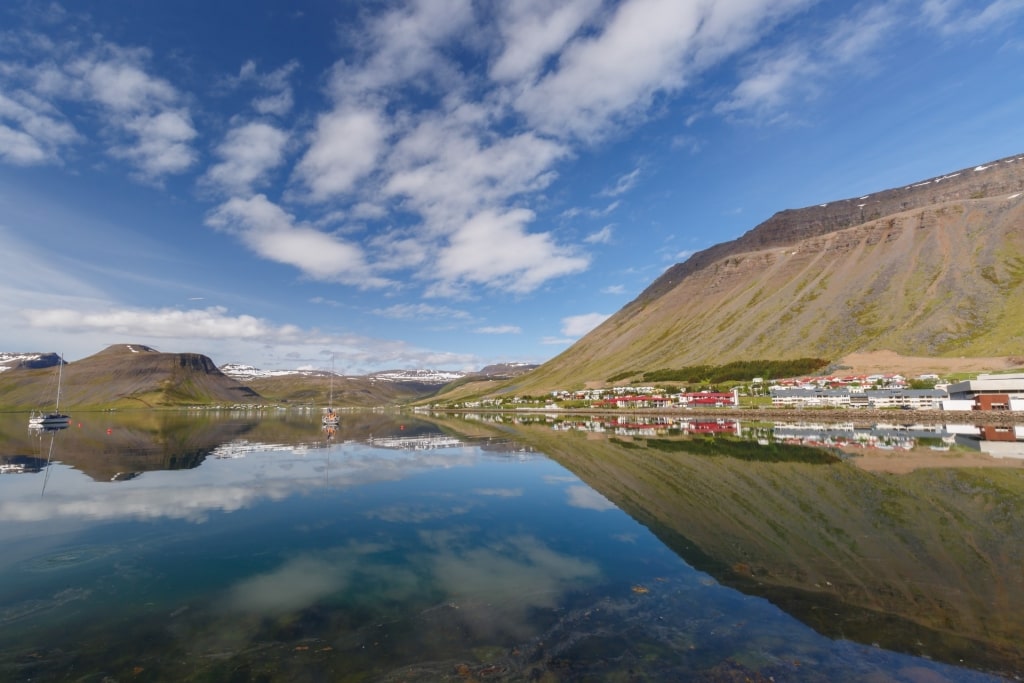
Kayaking in Isafjordur
Kayaking is one of the best things to do in Isafjordur, offering the chance to get within inches of the still, inky fjord.
Opt for a kayaking trip that departs from Isafjordur harbor to glide on the soothing water. You’ll paddle beneath the soaring mountains to gain a unique perspective of Isafjordur and the surrounding Westfjords.
Go in search of the region’s rich spectrum of wildlife, including seals, Arctic terns, and eider ducks.

Hestfjörður
You could also paddle from the bay of Ísafjarðardjúp around the coast of Snæfjallaströnd and into Hestfjörður fjord.
Extending your route will offer the chance to spot more of the region’s mind-bending wildlife, including dolphins, whales, and more sea birds. Gaze toward land and you might see nesting puffins or hear the faint bark of Arctic foxes, too.
Tour the Westfjord Museum
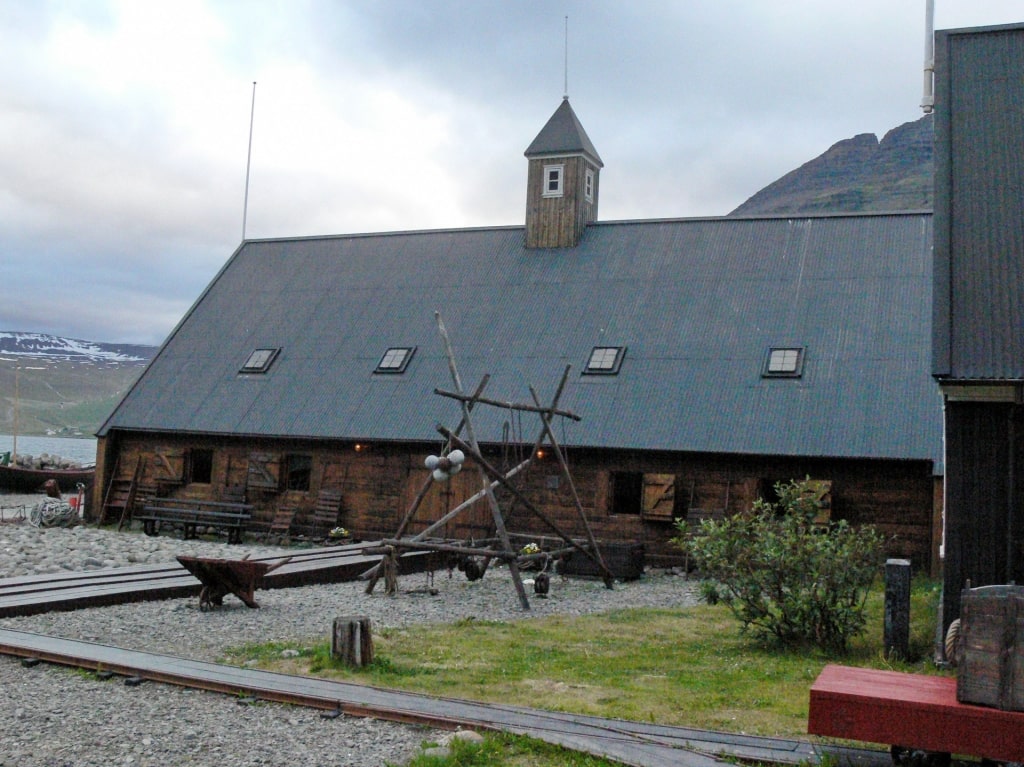
Westfjord Museum Photo by Christian Bickel on Wikimedia Commons, licensed under CC BY-SA 2.0 DE
Of all the things to do in Isafjordur, touring the Westfjord History Museum ranks highly for its remarkable storytelling of the region’s maritime past.
Located next to Isafjordur Tourist Information Center, the Westfjord Museum was founded in 1941 in Neskaupstadur, the town’s fish trading center and home to Iceland’s oldest buildings.
The museum beautifully tells the story of the region’s fishing industries and fishing families.
There’s a saltfish pantry, whale bones, model boats, marine equipment, and photographs to explore.
Marvel at Dynjandi Waterfall
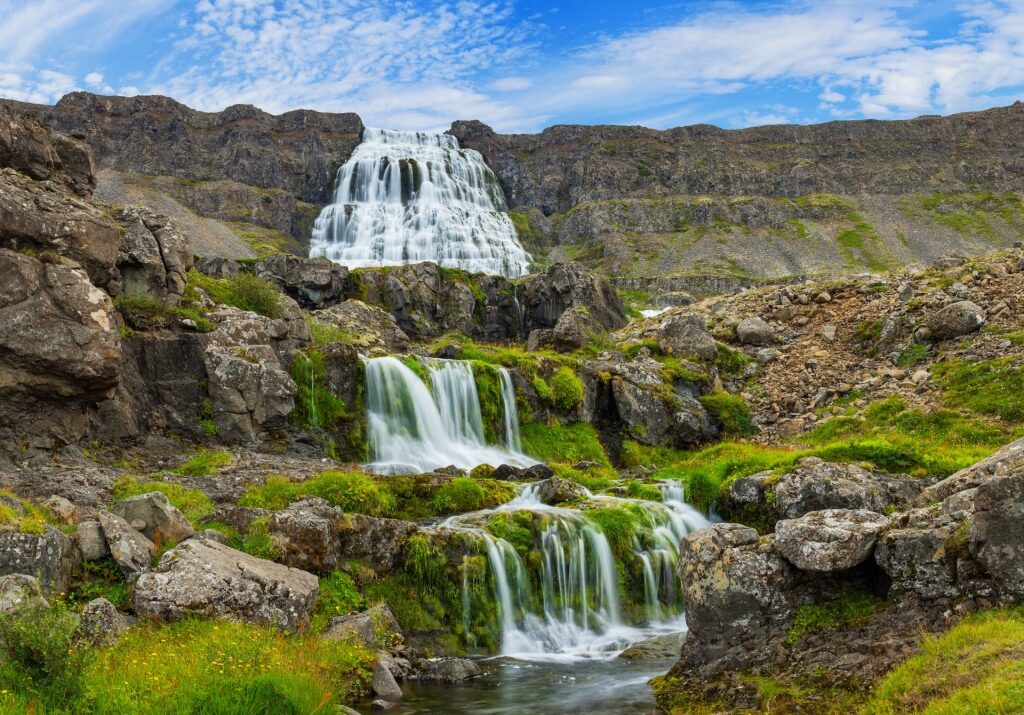
Dynjandi Waterfall
Dynjandi, meaning ‘thundering’ in Icelandic, is one of the most beautiful waterfalls in Iceland.
Dynjandi Waterfall lies a short 45-minute drive south of Isafjordur, making it an easy day trip through the breathtaking Westfjords.
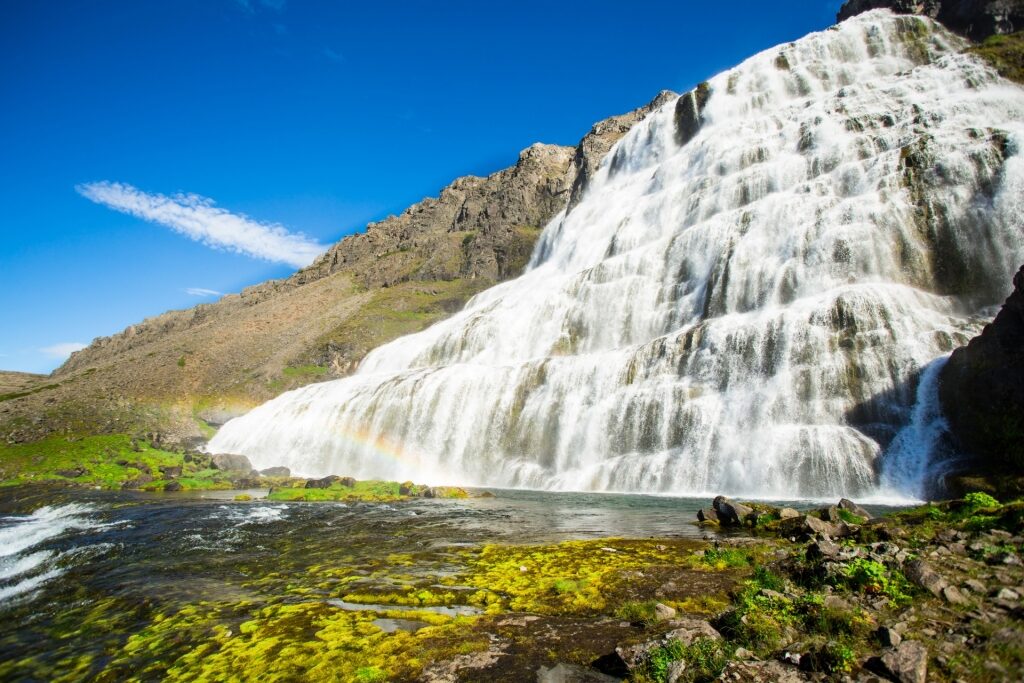
Dynjandi Waterfall
The largest waterfall in the Westfjords, Dynjandi drops 330 feet in beautiful waves down the mountainside. The waterfall is 98-foot wide at the top and 197 at the bottom, unfurling in a fan shape as the water releases into Arnarfjordur, the second-largest fjord of the Westfjords.
Arrive wearing hiking boots and a waterproof jacket. Wander alongside the six smaller falls at the foot of the main drop towards the base of Dynjandi to feel its chilly spray and enjoy one of Iceland’s best hikes.
Hike in the Seljalandsdalur Valley
The glorious Seljalandsdalur Valley lies behind Isafjordur, shadowing the fishing town from the west.

Lupine flowers
Dominated by Mount Göltur, the rugged Seljalandsdalur Valley is a riot of color in spring and summer, when delicate wildflowers blossom, including violet-hued lupine flowers, and sheep and goats graze on the open pastures.
Explore Viking ruins and visit an off-the-grid local farm to learn about mountain life on a dazzling hilly hike.
Experience the Charming Village of Thingeyri
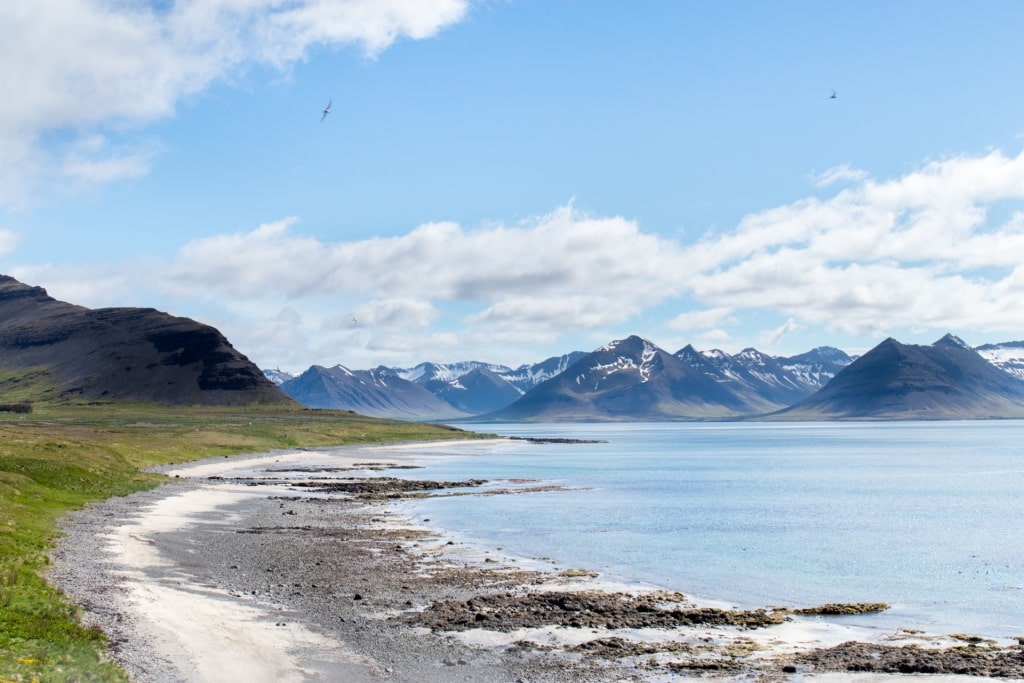
Thingeyri
The enchanting village of Thingeyri has a population of just 250 people. Lying on the north shore of the Dýrafjörður fjord, a 40-minute drive south of Isafjordur, Thingeyri (Þingeyri in Icelandic) is the location of a former Viking settlement and ancient parliament ruins.
Stroll to the grassy mounds, the remains of the medieval assembly, behind the village church.
Call by Grasteins Gallery for gorgeous handicrafts and artwork.
Iceland’s oldest mechanic’s workshop, now a museum, is in Thingeyri, too. You can spot the museum by the vibrant street art plastered on the exterior, next to the village church.

Simbahöllin Photo by Jennifer Boyer on Flickr, licensed under CC BY-ND 2.0
Stop for warming waffles with jam and cream at Simbahöllin, a cozy café set in a timber house facing the fjord.
The four-story building was imported to Iceland from Norway in 1915 by a grocer named Sigmundur (“Simbi”) Jónsson, which is how the soul-warming cafe earned its name.
If you’d prefer to explore the village from a saddle, horseback riding and bike tours are available, too operated by the owners of Simbahöllin.
Before saying farewell to Thingeyri, take a walk along the Icelandic beach to find the Viking settlement.
Take a Boat to the Abandoned Village of Hesteyri
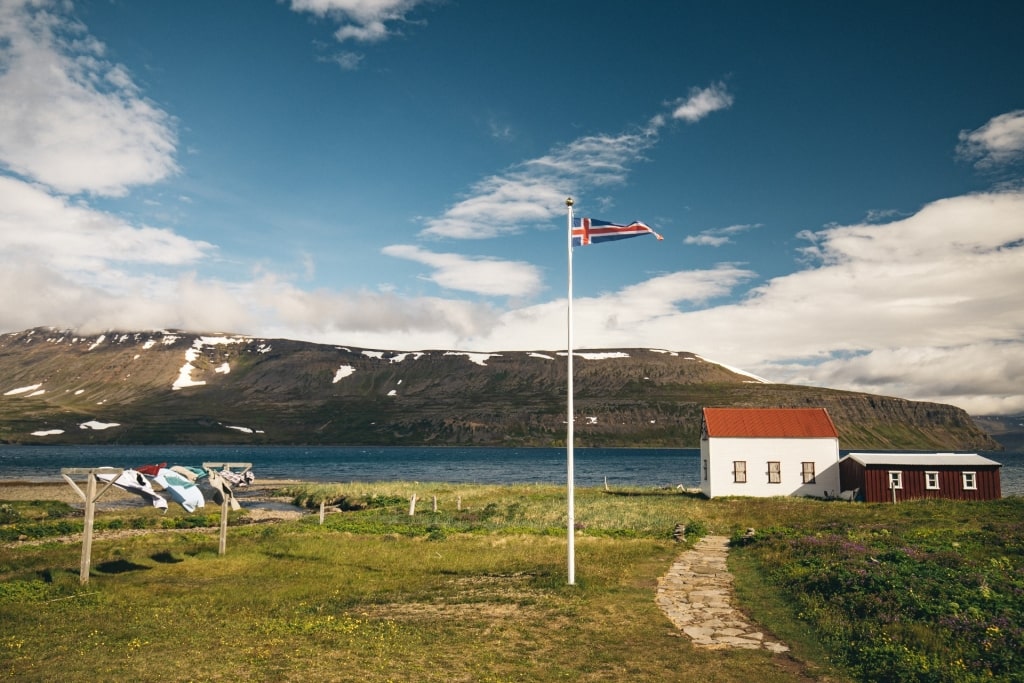
Hesteyri
Lying across the peninsula from Isafjordur in the far-flung Hornstrandir Nature Reserve, Hesteyri is an abandoned village that was once home to 80 residents.
Take a boat across the fjord to reach Hesteyri and embark on a tour of the eerie village. Enjoy uncovering Hesteyri’s history, with the settlement starting out as a whaling station in 1894. A herring factory followed with many of the residents working at the fish plant.
Visitors can wander through the uninhabited village, including the former doctor’s house, which opens as a café during summer. Here you could enjoy a menu of tea, coffee, pancakes, and rye bread with a variety of fish or meats.
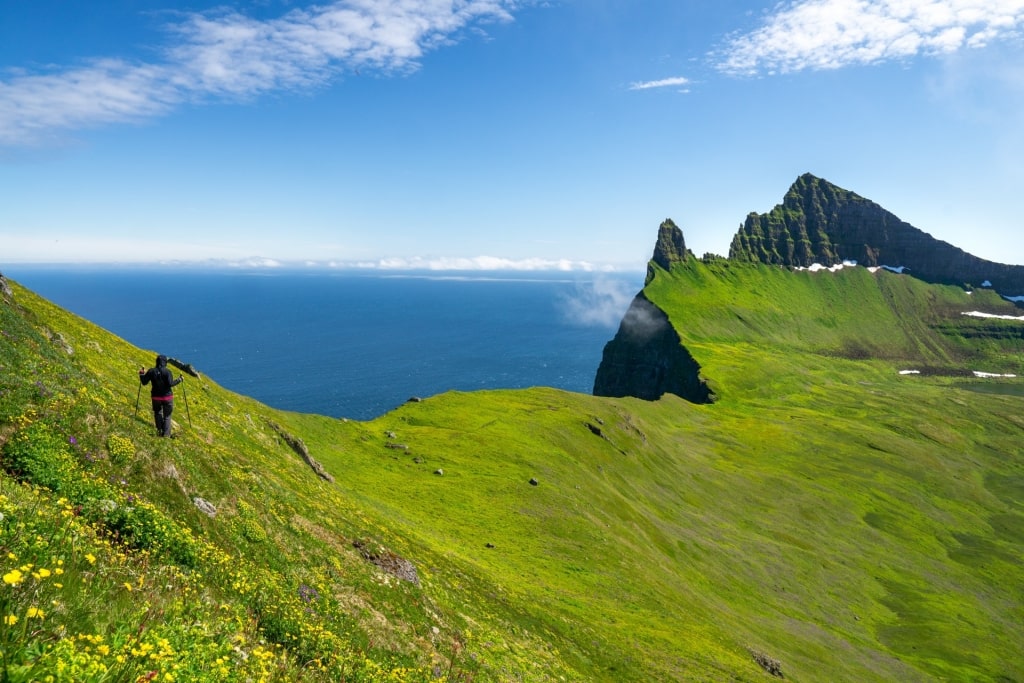
Hornstrandir Nature Reserve
You could also hike within the unspoiled Hornstrandir Nature Reserve. There’s a path from Hesteyri to Aðalvik or enjoy a stroll on the shore where you might spot some of the region’s diverse bird life or the odd scavenging Arctic fox.
A boat service operates from Isafjordur to Hesteyri daily during Iceland’s summer.
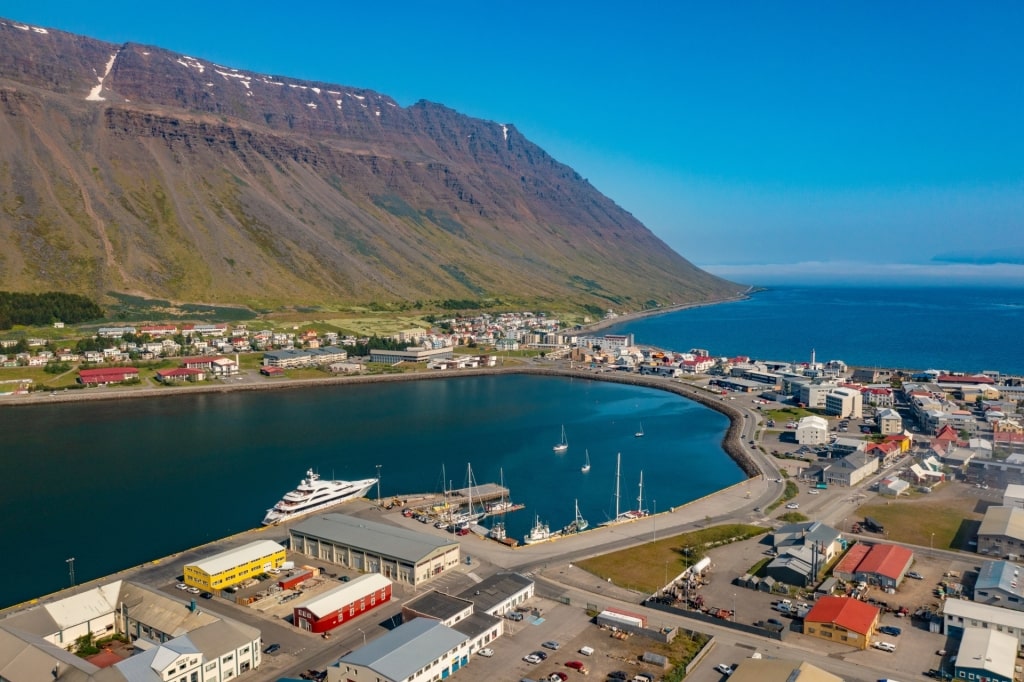
Isafjordur
From hiking and kayaking to museum hopping and resting up with local ales, Isafjordur offers a smorgasbord of nature, culture, and adventure. Search Celebrity’s cruises to Isafjordur to book a vacation to this awe-inspiring wilderness.
